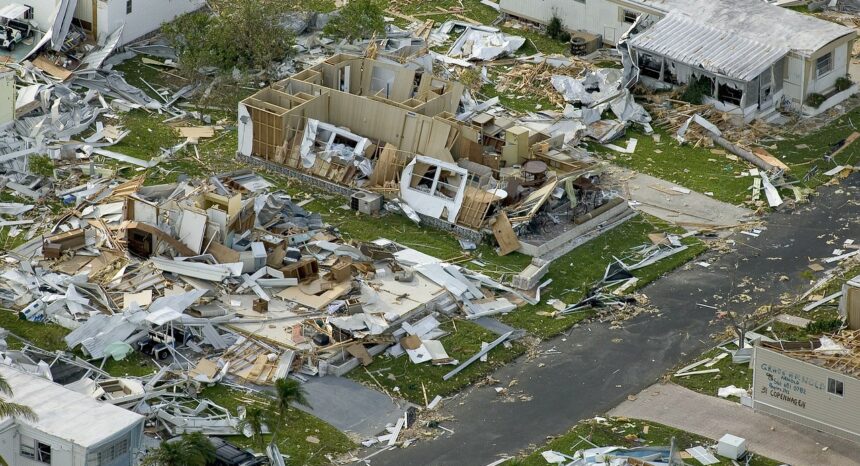Summer in the United States can mean glorious beach weather for coastal residents, but it’s also the time of year when tropical cyclones are most likely to form in the North Atlantic. According to the 2014 National Climate Assessment, Atlantic hurricanes have become increasingly frequent and long-lasting, from Hurricanes Katrina and Rita in 2005 to Hurricane Sandy in 2012. Academic research suggests that because of anthropogenic climate change, this trend will continue to intensify.
For hurricane survivors, the trauma is often compounded by economic struggles after the skies clear. In a 2014 study, “Disaster Recovery in Black and White: A Comparison of New Orleans and Gulfport,” Davia Cox Downey of Grand Valley State University opens with sobering statistics: Hurricane Katrina resulted in approximately $81 billion of damage to the Gulf, with Hurricane Rita costing the region as much as $5 billion.
In the paper, published in the American Review of Public Administration, Downey analyzes how poverty levels and race can factor in economic recovery. Building on prior research, she compares the reconstruction of New Orleans and Gulfport after Hurricane Katrina using data from the U.S. Census Bureau, the Brookings Institution and the Federal Emergency Management Agency (FEMA). Both communities suffered extensive damage, but New Orleans is poorer, more racially diverse and segregated. Downey attempts to determine whether these characteristics could have resulted in different paces for rebuilding and job creation for each urban area.
She also examines how levels of funding and the methods by which it is distributed can contribute to post-disaster economic growth. After Katrina, assistance included FEMA’s Public Assistance (PA) funds, which went to state and local government entities, nonprofits and public utilities. FEMA also provided Individual and Household Assistance (IA), including the Individuals and Households Program (IHP), which assisted homeowners and renters. In addition, the Louisiana Road Home program compensated affected property owners, while Mississippi’s Housing Assistance Program (HAP) gave homeowners money to rebuild damaged homes.
The study explores three specific hypotheses: (1) High percentages of minorities decrease economic recovery; (2) A high percentages of poverty decreases economic recovery; and (3) Targeted state emergency funds will result in higher economic recovery.
Key findings of the study include:
- New Orleans and Gulfport have different poverty and racial diversity profiles, both from each other and their surrounding states (Louisiana and Mississippi, respectively). These differences appear to have a range of effects on economic recovery.
- The first hypothesis, that a high percentage of minorities decreases economic recovery, was supported by the evidence in the states of Louisiana and Mississippi, but not the cities of New Orleans and Gulfport themselves. “Simply being a location with a large minority population does not appear to hinder economic recovery after disaster,” the researcher states.
- Race had a greater effect outside New Orleans and in the city itself, an unexpected finding. “This may illustrate more endemic issues of racial disparities generally in Louisiana.”
- The second hypothesis, that high percentages of poverty decrease economic recovery, was supported by evidence in New Orleans, Louisiana and Mississippi, but not Gulfport itself. “In the Gulfport area, where racial diversity and poverty were not as high, neither percent minority nor proportions of uneducated residents in the job market depressed recovery.”
- No evidence was found to support the third hypothesis, that state and federal emergency funds resulted in higher economic recovery. None of the funding streams in Louisiana and Mississippi, be they to local residents, NGOs or public agencies, had a significant effect on the economy in terms of new job creation. “It is surmised that because these funds were used primarily for repairs and construction of physical infrastructure in the aftermath of disasters … they do not play a significant role in creating capacity for producing new jobs.” However, “the record in Gulfport also suggests that targeted state assistance can produce better results, at least in the short term.”
- “The passage of time plays a critical role in economic recovery. For both New Orleans and the state of Louisiana, new jobs increased with the passage of time after the hurricanes. This pattern was also observed for the state of Mississippi as a whole.”
“Taken together these findings suggest that racial diversity challenges economic recovery after a disaster more than poverty, but only in areas that have relatively less racial diversity overall (e.g., out- state, rural areas, and less segregated metropolitan areas),” the researcher states. “In short, while post-disaster media coverage dramatically captured the plight of African-American residents trapped in New Orleans, minorities in more isolated areas may suffer greater damage long term.” She suggests that economic recovery needs to be part of emergency management policies early on, and that it should be uniquely tailored to local populations.
Related research: The March 2014 report from the U.N.’s Intergovernmental Panel on Climate Change (IPCC) details ongoing environmental changes, including shrinking ice caps, droughts and flooding, storms and extinctions, directly related to global warming. A 2013 Journalist’s Resource research roundup on natural disasters and community resiliency highlights recent studies on managing the consequences of climate change. A 2014 study based on surveys by the Yale Project on Climate Change and the George Mason University Center for Climate Change Communication on the different reactions people have to the terms “climate change” and “global warming.”
Keywords: disasters, recovery, FEMA, African-American, global warming, climate change


Expert Commentary